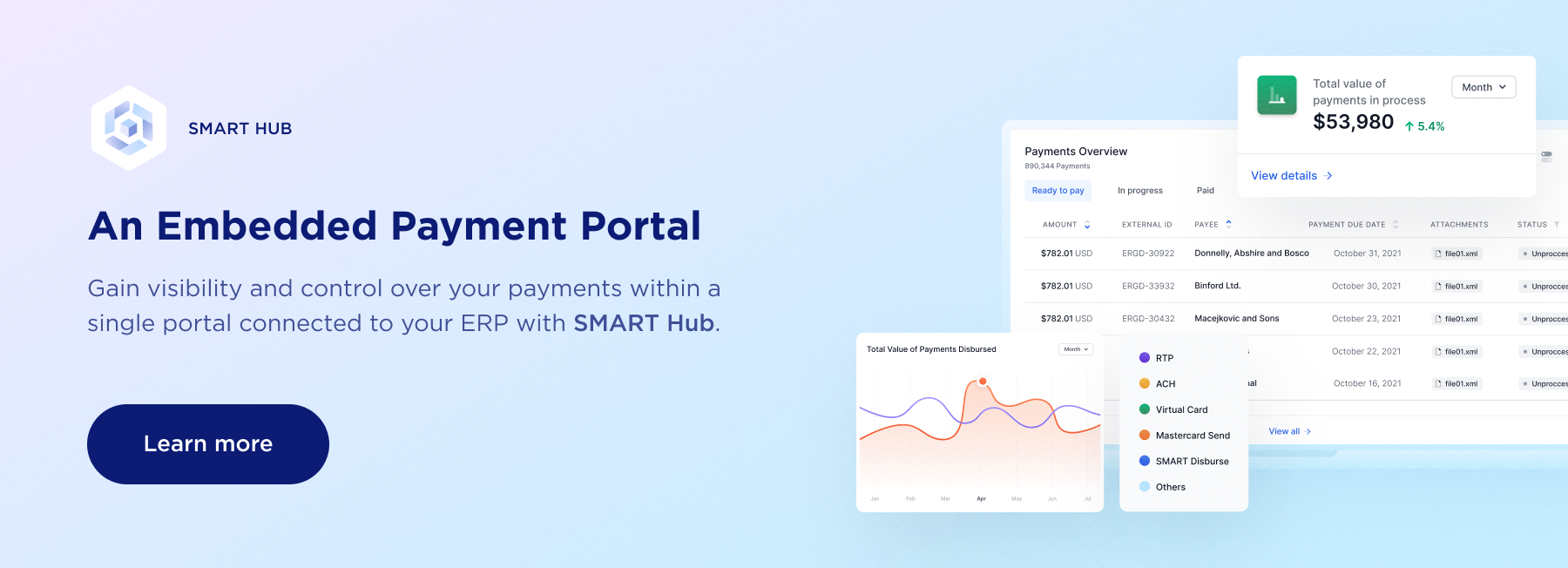
Ever wonder why business-to-business commerce is so complicated?
The root of the problem is that B2B payment processing require lots of manual, outdated processes.
Understanding the Accounts Payable Process
Consider the accounts payable function at most businesses:
Invoice Processing
- Invoice is received via the mail, e-mail, portal, FTP landing site or other method
- The invoice is confirmed against a PO and the supplier is validated
- Invoice data is captured
- The invoice is approved via established rules and processes
Payment Processing
- Once an invoice is approved, payee details and preferences are confirmed
- A payments file is generated
- The payments file is approved and uploaded
- Payments are executed
- Any irregularities and inconsistencies are reviewed and resolved
Data Remittance & Reconciliation
- Remittance information is created for each payment
- Remittance information is sent to suppliers
- Any supplier inquiries are resolved
Treasury and Working Capital Management
- Accounts payable data is monitored
- Cash position is tracked, and cash flow is managed
- Financing and factoring are provided to suppliers
.png?width=1000&height=570&name=Payables%20(1).png)
Understanding the Accounts Receivable Process
Things are not much better in accounts receivable:
Invoice Processing
- Invoices are created and sent to customers
- The receipt of invoice is confirmed, when possible
- Any customer questions regarding the invoice are resolved
- Invoice approval is tracked, when possible
Payment Processing
- Payment information and preferences are confirmed
- Payments are processed by the business or a lockbox providers
- Customers are contacted regarding any late payments or short payments
Data Remittance & Reconciliation
- Remittance information is captured by the business or a lockbox provider
- Remittances are matched to open invoices
- Customers are contacted regarding any missing or incomplete remittances
Treasury and Working Capital Management
- Accounts receivable data is monitored
- Cash position is tracked, and cash flow is managed
- Financing and factoring are accessed, as needed
.png?width=1000&height=570&name=Receivables%20(1).png)
Identifying Inefficiencies and Cost-Reduction Opportunities
Each step of these processes creates opportunities for friction because of:
- Paper
- Manual processes
- Errors
- Long cycle times
- Inadequate visibility
- Fragmented systems
More to follow...
This article is part 2/7 of our B2B REVOLUTION series where we explore the current B2B landscape and the next evolutionary phase in payments.
- #1 Rethinking Business Payments: Operational and Financial Challenges
- #2 Why B2B Payments are Complicated - How Businesses Pay and Get Paid
- #3 Why are B2B Payments so Fragmented? The Critical Role of Standardization
- #4 The Future of Business Payments – A2A Automation
- #5 Faster, Smarter Business Payments – How We Can Optimize B2B Payments
- #6 A2A Automation - Connecting Buyers and Suppliers for Frictionless Payments
- #7 A Game-Changing Solution – How A2A Automation Benefits Banks




